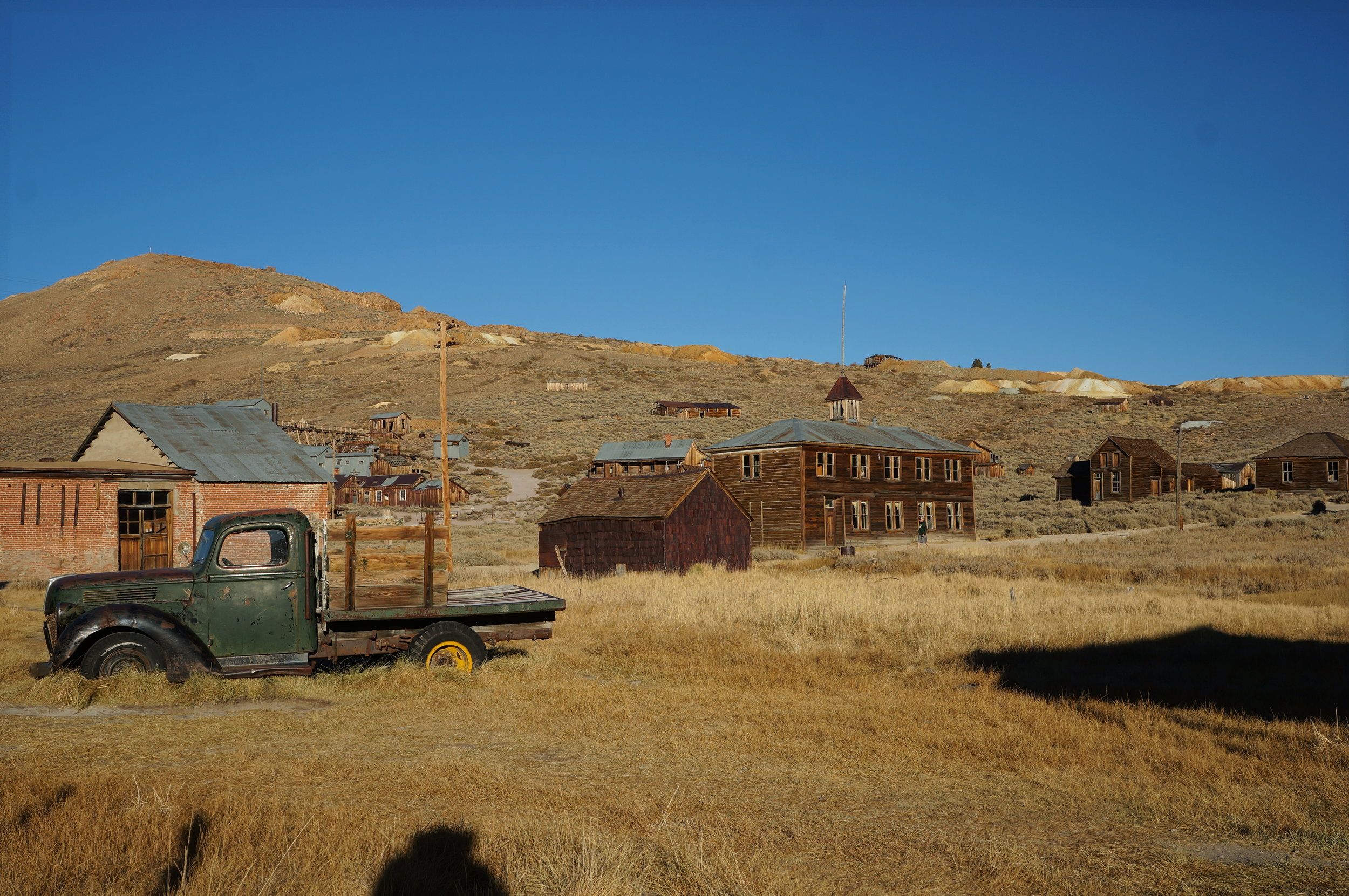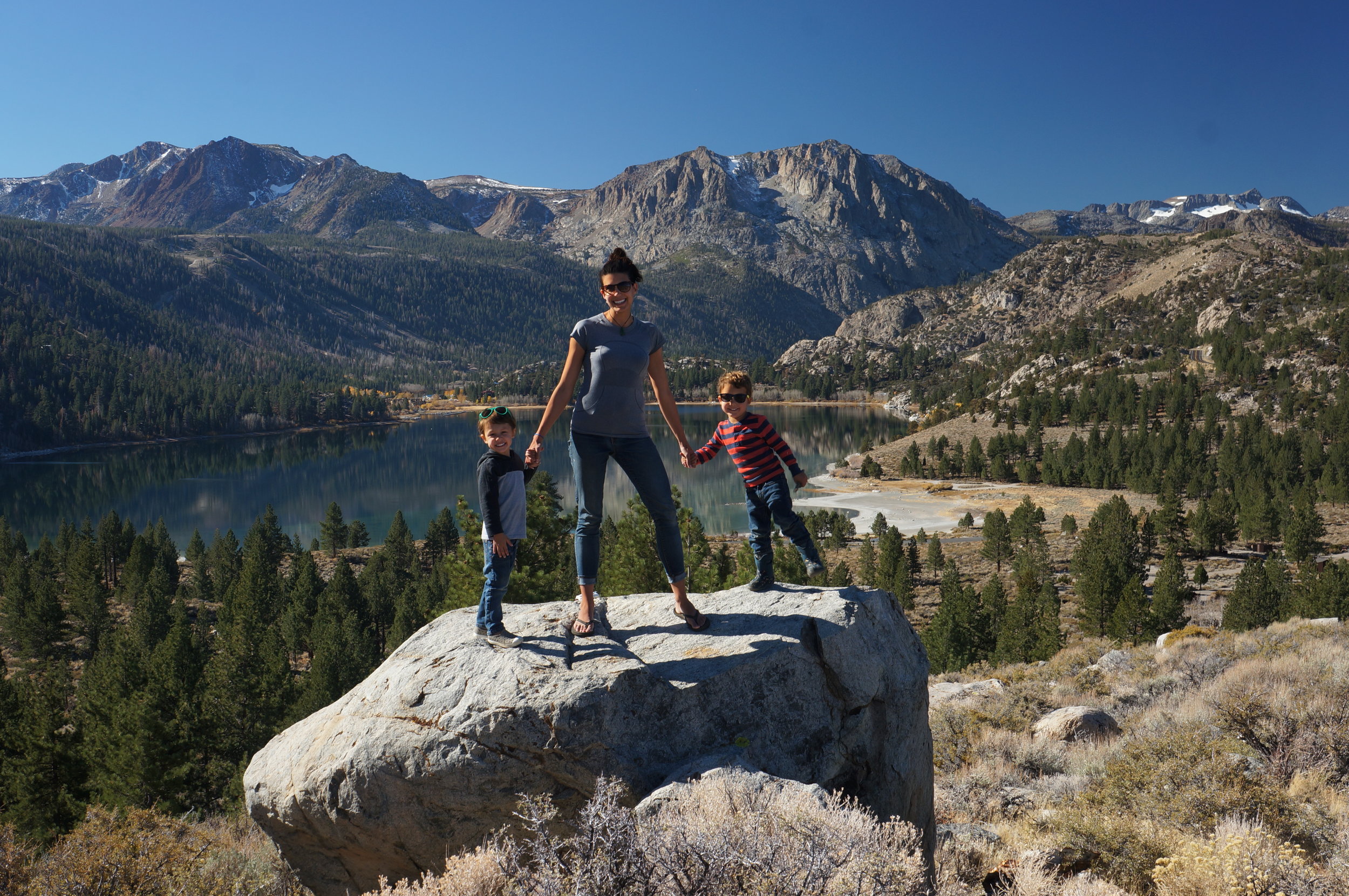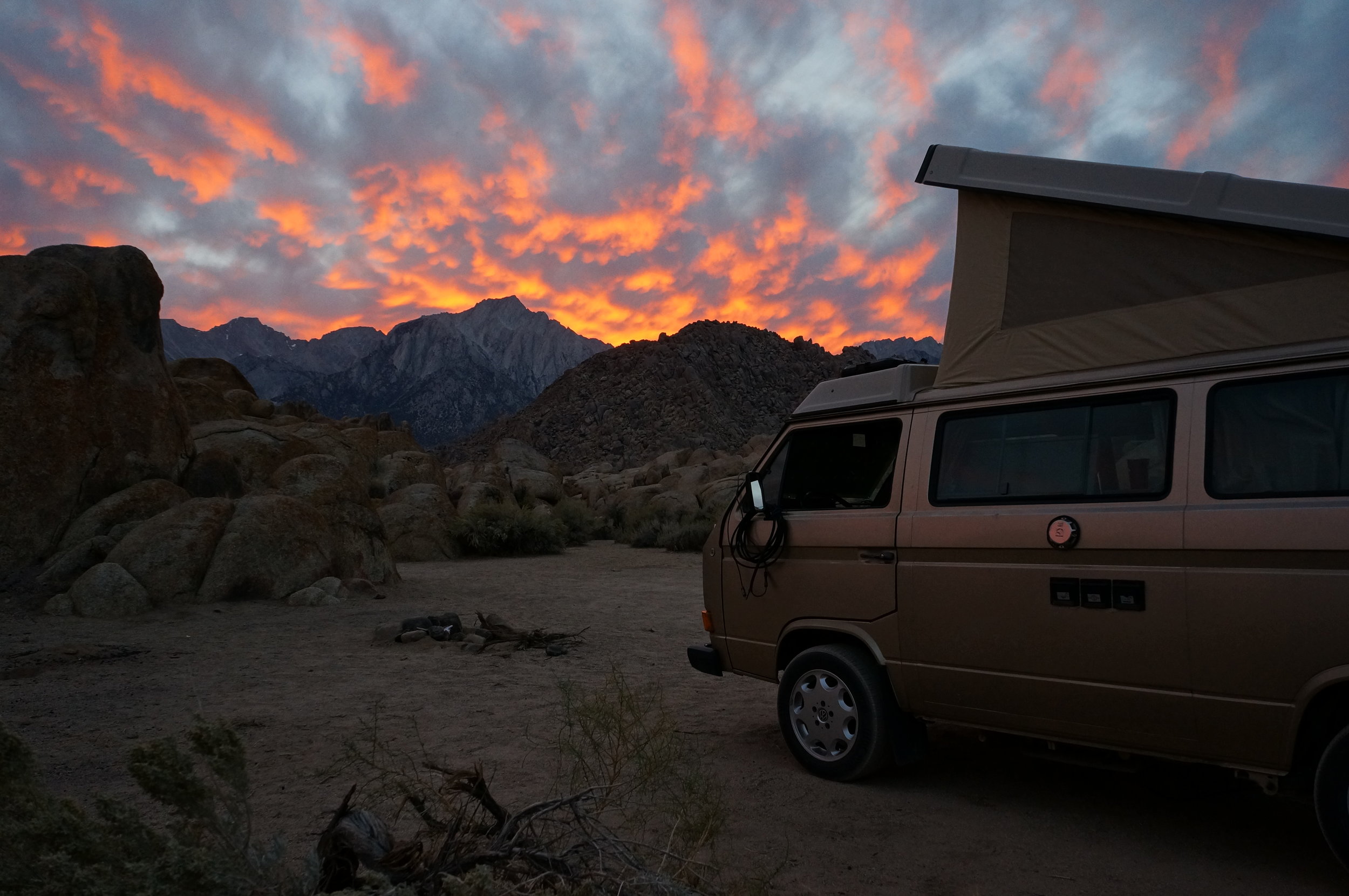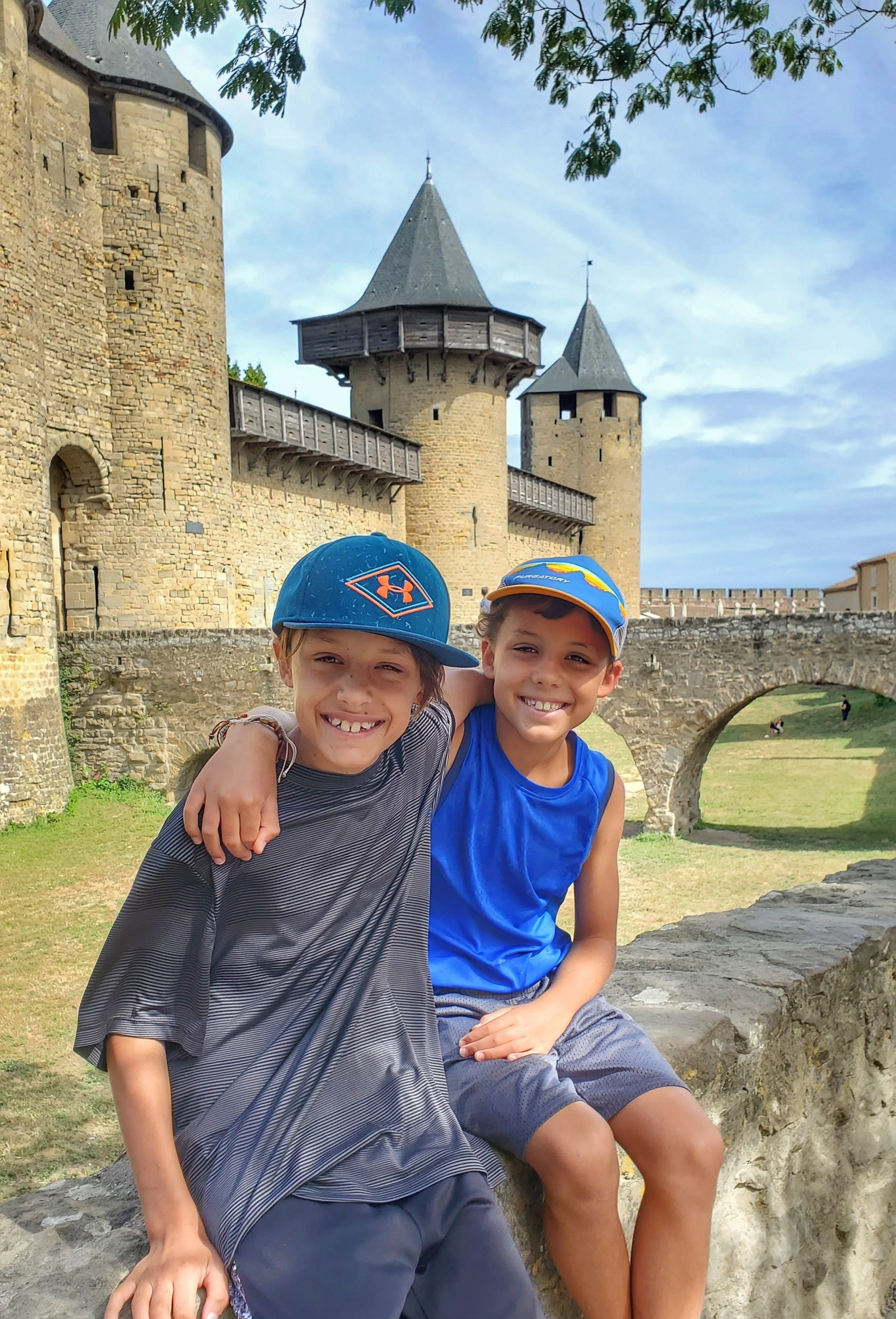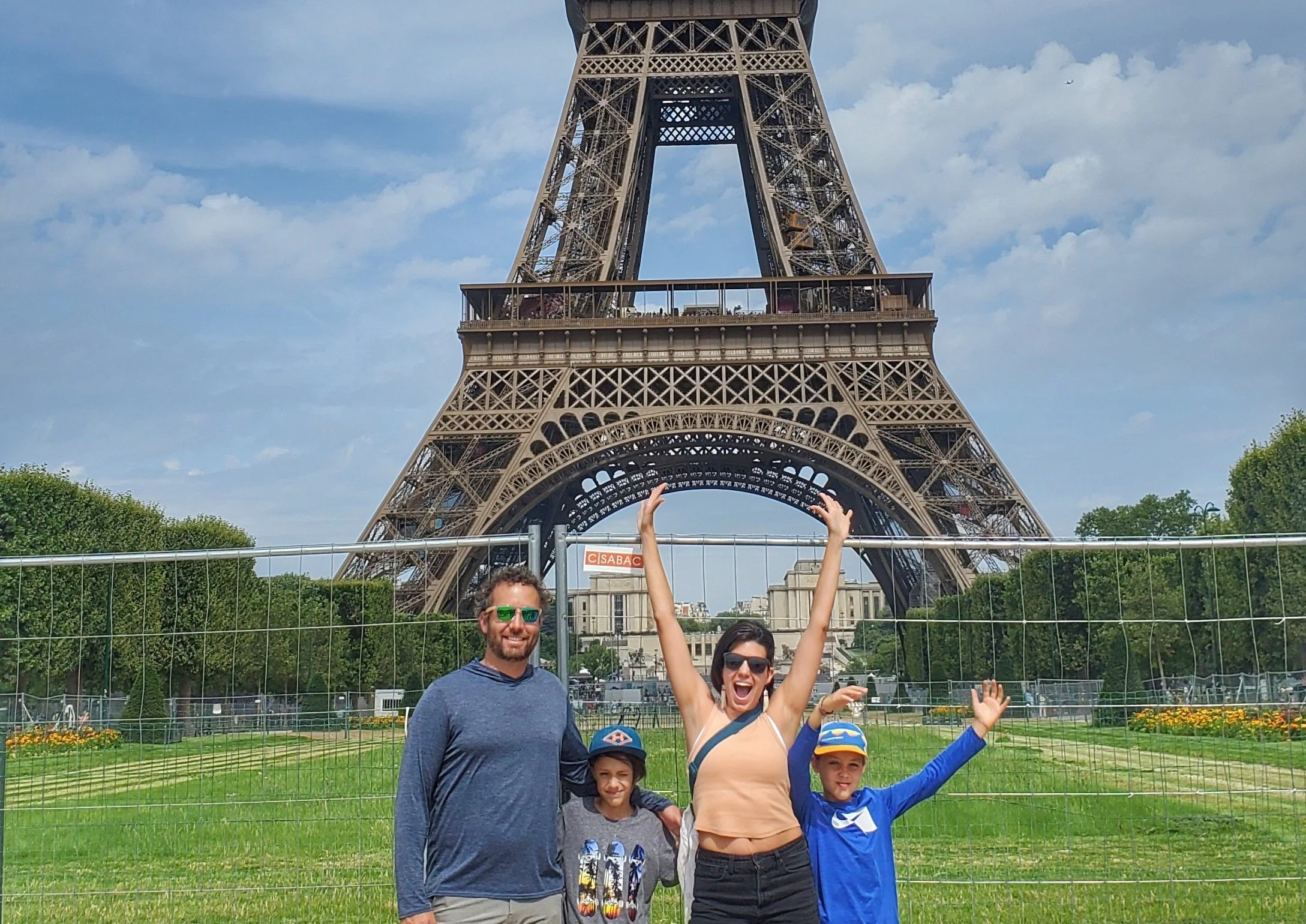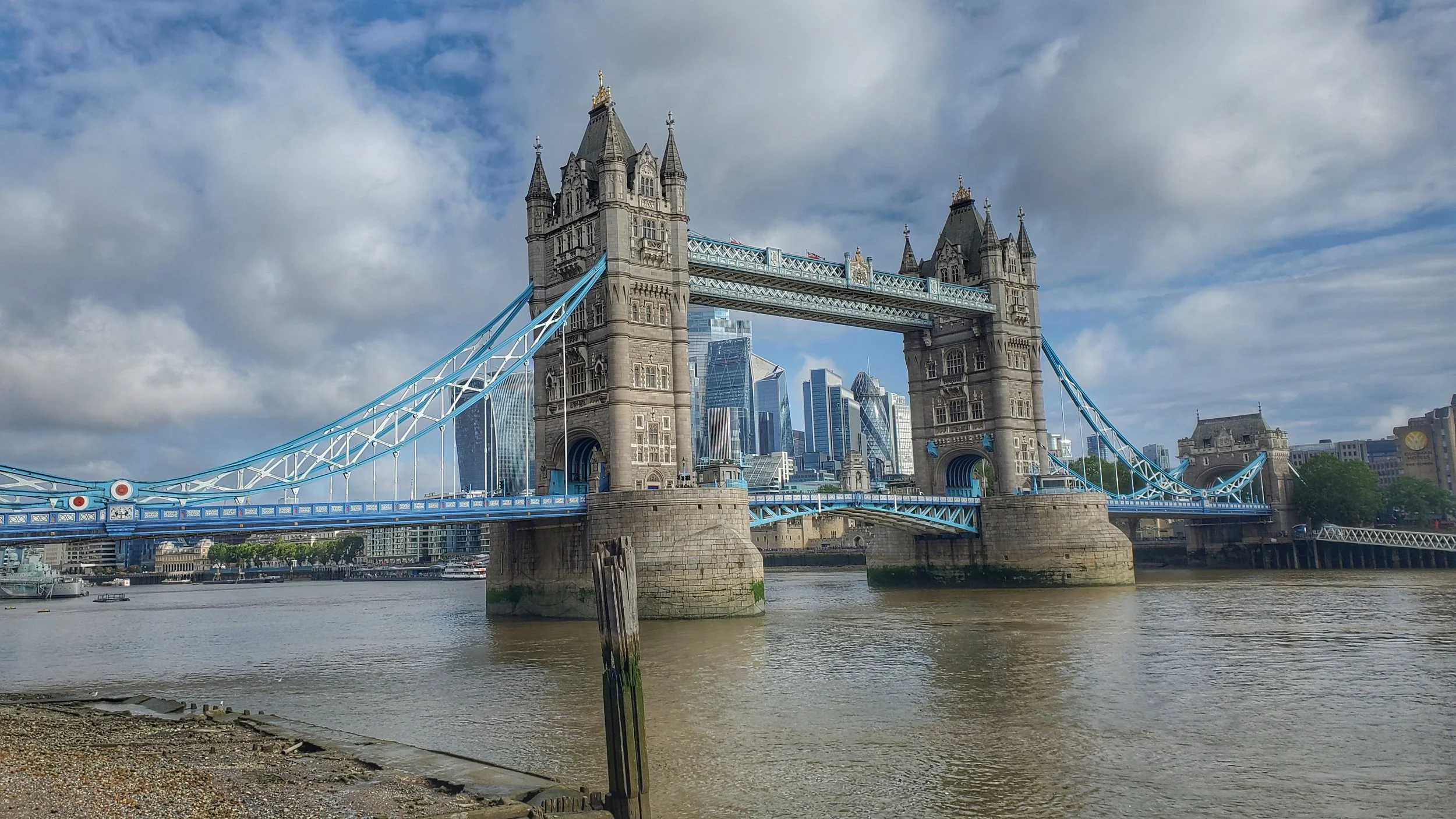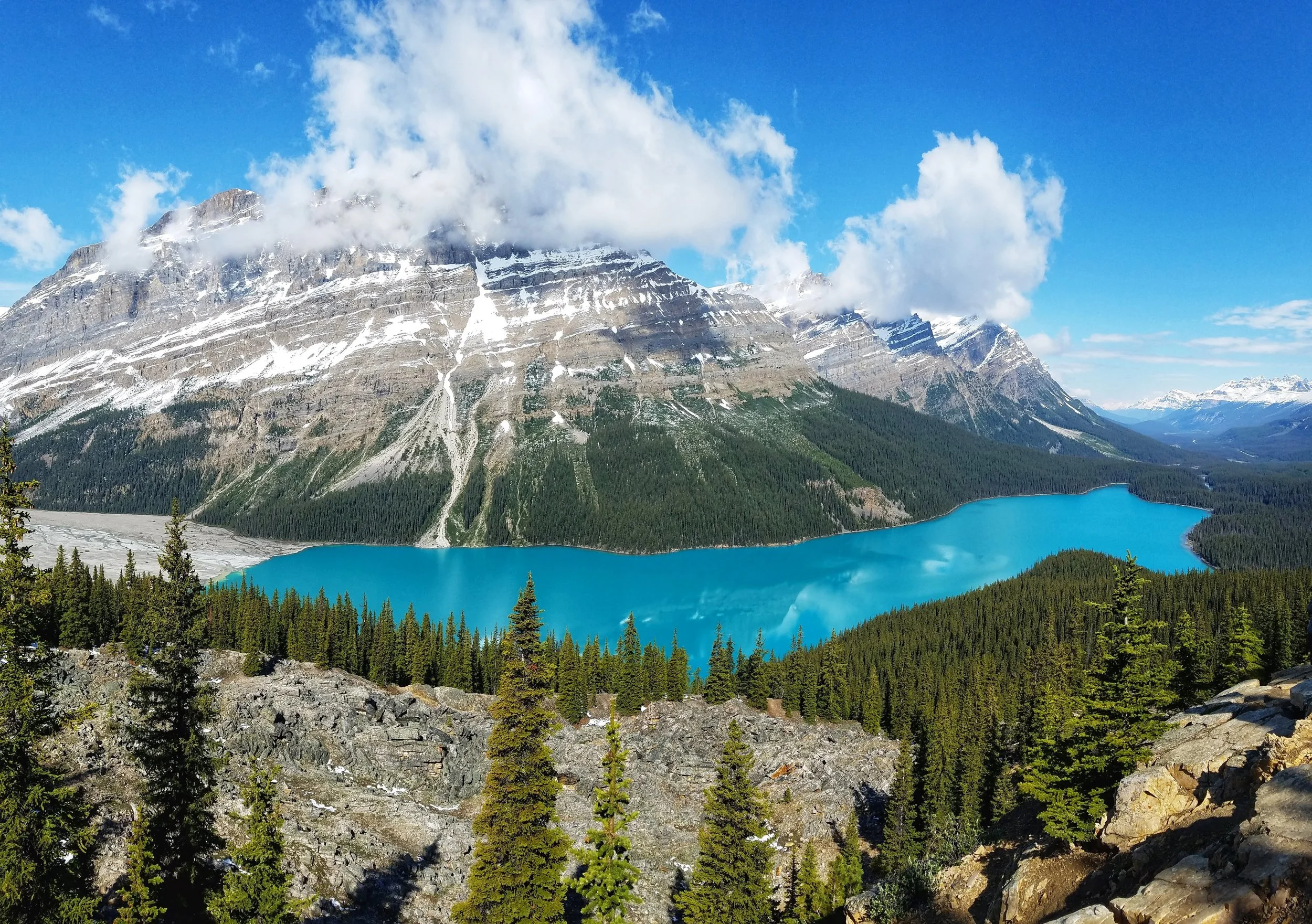Road Tripping: Central Sierra Nevada
This section of California is hands down the best part of inland California. Perhaps the WHOLE state (of what we've seen, anyway). That's a tall order, I know. But since Oregon already won best coastline, we were seeking some new scenery that might win us over in the heartland of CA. And this area did just that!
Below we put together our favorite eight places along the central Sierra Nevadas, all within a couple hundred miles of one another. For four of the days we based ourselves in Mammoth Lakes with Matt & Lydia (Chip's bro and bro's girlfriend), which we thoroughly enjoyed exploring in the off season. The other days, we camped.
Alright, let's get to this list...from north to south (a map is provided at the bottom of this post to share perspective).
1. Lumsden Campground & Yosemite National Park
We hate to say it but we didn't receive the warmest of welcome into California. We will spare you the details but let's just say it was busy, roads were busy, and people were busy. Ultimately, after spending time in this type of atmosphere, we sought solitude to regroup and spend quality family time alone. We read about Lumsden Campground, a free campground situated on the Stanislaus valley floor and along the Tuolumne River. Because of the narrow and winding road, we would recommend this to anyone with a van/truck with semi-good clearance.
To say we loved it here was an understatement. The river bubbled behind Spud and we visited it like it was our own comfortable backyard. We found a sandy beach a couple hundred feet away to splash and "surf" in during the daytime. The empty gravel road served as the perfect place for a run. Previous campers even left us a giant pile of wood for fires at night. There was only one other person in the campground and we didn't cross paths with them once. Icing on the cake? A meteor shower both nights!
We felt alive and refreshed after a few days at Lumsden so we decided it was time to creep out of the wild and back into civilization. This being Yosemite National Park. We only had one day to explore so we hit up Inspiration Point, Bridalveil Falls, and Glacier Point then drove Tioga Pass to the eastern side of the Sierras. As one might expect, we were in awe with Yosemite. It's quite different than any other national park we had been to. Every turn in the road was a new and different rock face; sheer and dominating. We often caught ourselves sticking our heads out the window, craning our necks this way and that, as we drove along the stunning Yosemite Valley. I can see it might lose it's appeal though during the peak season. Visiting at the end of October was the way to go - it was 80 degrees still but didn't have the crowds.
2. Travertine Hot Springs - Bridgeport, California
There are several known hot springs east of the Sierras, some developed and others not. We prefer the complimentary kind. The one that caught my eye online was easy to get to and boasts stunning views of the Sierras all while soaking in your favorite bikini (or not!). Just south of Bridgeport lies Travertine Hot Springs. While we didn't spend the night, camping is available in nearby pull-offs. The only pools we discovered (to the right of the gravel parking area) had to have been the best because I couldn't imagine a more serene and beautiful setting. The piping hot water came pumping up from the depths of the earth, and a worn out impression carried it several feet until is slid down and trickled into the pools (you can spot the rust colored lines in the photos below).
Tip: Go mid-week and in the off-season. You may not see a soul!
3. Best Preserved Ghost Town - Bodie, California
We had been to other ghost towns and were initially hesitant to commit to driving out to Bodie. While it's really not that far out of the way, we weren't sure it was going to live up to the mental images we conjured up in our heads, let alone we didn't want to pay the $8 per person admission. So what does one do? Read the online reviews, of course. Nearly every review convinced us that we just had to see this place so we psyched ourselves up and traveled the 13 miles one way (Note: the last three miles were a washboard nightmare).
Pictures online never really do a place justice. From what we could tell, there would be a handful of cool buildings to look at in a nice setting. We were totally wrong. Perhaps it was the lack of crowds, the time of day (late afternoon) or the fact that we weren't expecting much, but our socks were knocked off. This place is far better preserved than any place we've been before, but has just the right amount of decay to feel authentic and not staged. If you've been harboring dreams since your childhood of somehow walking out of the desert into a ghost town where nobody but you has set foot for 75 years, this is the closest you will ever get. If you're in the area, just GO!
4. Mono Lake, California
At first we had planned to see Mono Lake for sunrise. Why I thought waking myself up (let alone my husband and children) at the break of dawn would be a good idea is beyond me. My kids maybe. But Chip? He'd likely only get up that early for one thing. No, not that. But anyway, this is Mono Lake at sunset. It was just as enchanting as the pictures look, but even more so in person. My tip? Skip sunrise and hit sunset. It's magical and no one is crabby they had to skip coffee (or blueberry waffles).
Before you scroll through the pictures, I want to leave you with a few snippets of info on Mono Lake because it is very unique in comparison to any other lake.
As we descended from Tioga Pass a new view unfolded in front of us. We had made it over the Sierra Nevadas and an expansive lake sat at the bottom of the pass next to the small town of Lee Vining. Mono Lake is a shallow saline soda lake that's three times more salty than the sea (Yes! You can float in it like the dead sea. No, we did not.). It was formed roughly 750,000 years ago and the lack of an outlet caused high levels of salt to accumulate. No fish live in the lake but brine shrimp thrive here. In the 40's, Sierra Nevada's water run-off that normally fed Mono was diverted to Los Angeles making lake levels drop, creating an ecological disaster and health hazard for the region. In the 90's Mono Lake regained its right to be protected but water levels will likely never rise to those of the past. But on the bright side, and what you'll see below, are the tufa towers which rise hauntingly up in the water and grace the shoreline of the lake in a remarkably beautiful way.
5. June Lake Loop - Mammoth Lakes, California
Only ten miles north of Mammoth Lakes lies a drive through most excellent alpine scenery. The June Lake Loop Road meanders past a number of glimmering glacial lakes, all hugged by craggy peaks that scrape the blue sky. You could easily make a day out of the 15 mile loop by stopping at the tiny little town (there's also a small ski resort) and then visiting a number of lakes which all offer other lovely views and activities like fishing, water sports, hiking, and picnicking. We were just past the peak of fall colors but saw remnants of autumn on some of the trees that this area puts out.
6. Devils Postpile National Monument - Mammoth Lakes, California
We ended up timing Devils Postpile perfectly because it closed for the season only a few days after our visit. While the dates of operation change from year to year, the monument typically closes near the end of October and reopens in June (but check the website to confirm). A hike at just under a half a mile one-way led us to the famous postpile formation.
Below you'll see the postpile refers to a dark cliff of columnar basalt that was created by lava some 100,000 years ago. Once a part of Yosemite, the findings of gold led to a boundary change leaving DP on public land. A proposal to build a dam was passed that would wipe out the postpile into the river. Thankfully it still remains for others to see as influential leaders convinced the government to cease demolition and instead it was protected and designated a National Monument. This place was quite impressive and great for a quick morning hike.
7. Manzanar National Historic Site - Manzanar, California
Taken straight from the website itself: "In 1942, the United States government ordered more than 110,000 men, women, and children to leave their homes and detained them in remote, military-style camps. Manzanar War Relocation Center was one of ten camps where Japanese American citizens and resident Japanese aliens were incarcerated during World War II." Taken away from their normal lives and in some cases separated from family, these people were only given a few days to tidy up loose ends (who was going to watch their house/farm/pets?) and then were ordered to go to one of the camps not knowing the duration of their stay or living conditions.
Chip and I found out about Manzanar through a friend that had visited. Up until then I had no clue that the United States had been running concentration camps during WWII. Beyond the research though we knew we had to visit one day to truly experience the place, learn about the detainees, and pay our respects to those lives that were affected.
It was a somber place, as you can imagine, similar to any other monument of its kind (Pearl Harbor or if you've ever been to the concentration camps in Germany). We first drove around the grounds to get a feel for the layout and where and how these folks lived. You may have guessed, and you'd be right, that the bunkers were bare boned except for metal bunk beds that lined both sides of the building, leaving little room for personal space or a homey environment. We learned that as the years wore on (Manzanar was in operation for three years) people were able make a home for themselves with small pieces of furniture and minimal belongings and some even met their future spouse. Within the Visitor's Center (which is quite impressive) are stories, letters, photos, and things that help paint the picture that once was Manzanar. Our hearts went out to these people after digging deeper and being onsite that day. Because it's hard for me to summarize this place in a few short paragraphs, should you desire to learn more, here are a few online resources: National Park Service and Life in an American Concentration Camp.
8. Movie Road - Alabama Hills, California
This place is so rad!
I wish that's all I could say about Alabama Hills and you'd get it. That you might add this to your list (now!) and go here one day. You'd say "That Lindsay was right. This place is so rad!!!!!" For one, the area spreads as far as the eyes can see. Climb on top of your boulder of choice and before you lies a million more boulders to explore, climb, scale, wander through and around. Not to mention the rugged Sierra Nevadas stretch out in either direction, hypnotizing you to stare at this beautiful mountain range every time you look up. If it couldn't get any better than that, the camping is free! Tons and tons of dispersed camping is found here that can accommodate practically any size rig. There are spots in the sun, spots in the shade, spots on boulders, and some in-between. We were lucky enough to have an awesome family of seven living out of a "skoolie" be our neighbors for the few nights we were there. One evening we shared a potluck dinner together and watched the sunset (both photos seen below) and both moments were by far one of the best in Alabama Hills.
After Thoughts...
So there you have it. Still weeks later we are reminiscing about this incredible section of California. Has anyone else been out this way? Did you fall in love with any of these spots like we did? What did we miss (because I have a feeling we will be back!!!)?
Wishing you all the Happiest Holidays, The Kellers :-)
















